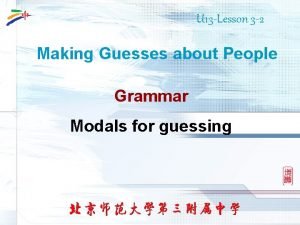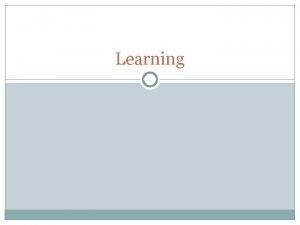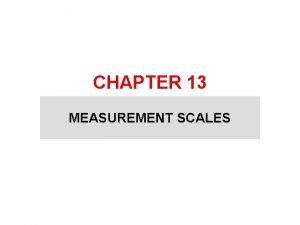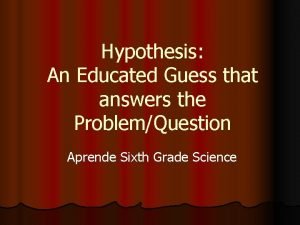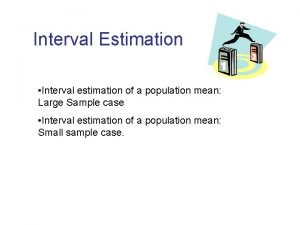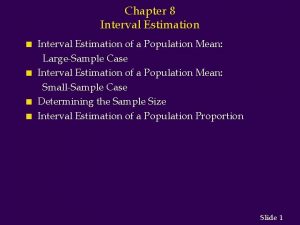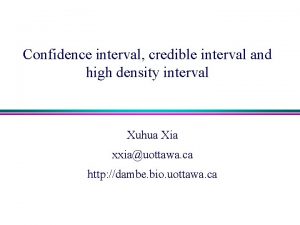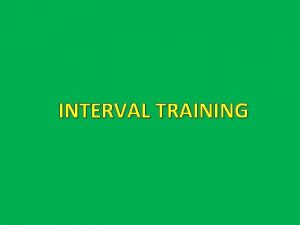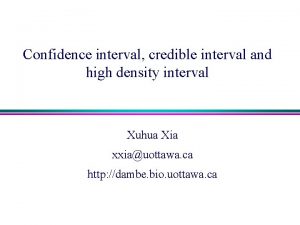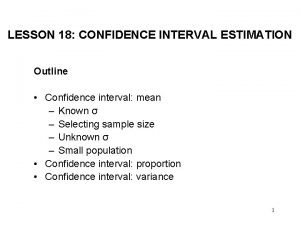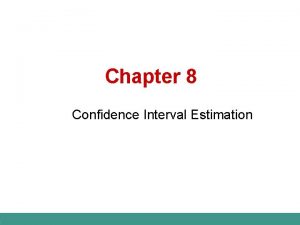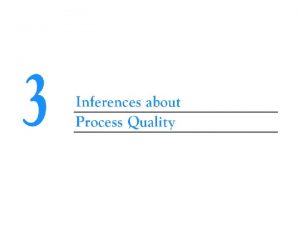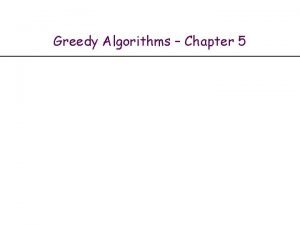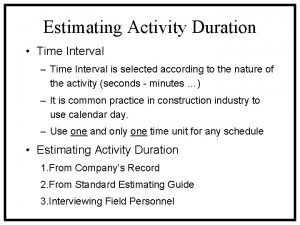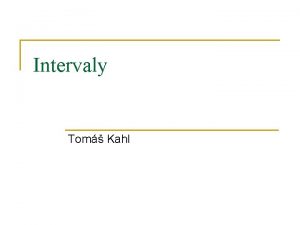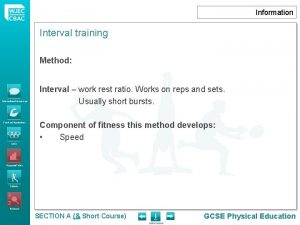Estimation Making Educated Guesses Point Estimation Interval Estimation





















- Slides: 21

Estimation: Making Educated Guesses • Point Estimation • Interval Estimation • Hypothesis Testing

Case Ia • Does a particular sample of observations in this study come from a specified population or does it represent a different population? – “Known” population mean – “Known” population standard deviation

The 4 th Grade Case • Suppose you are the superintendent of schools and you discover that the average reading achievement of your 4 th graders has fallen far below that of previous years. One explanation posed by the teachers is that the district is faced with an unusually dull group of 4 th graders this year. The teachers suggest that the average verbal IQ of this year’s 4 th graders is far different from the national average and that is why reading achievement is so low. • You know that IQ-test scores don’t change much from year to year unless a school system is affected by changes in its attendance (e. g. a large migration of new families). Your school system has remained quite stable, but you decide to check out the teacher’s claim • You have a limited budget and while you have extensive achievement data on the 4 th graders, you have limited IQ data available. So you decide to test a sample of 400 4 th graders rather than all 5000 of them.

The Logic of Hypothesis Testing • Null hypotheses (H 0) • Alternative hypotheses (H 1) • Is this backwards and convoluted or what?

Hypothesis Testing: General Model • Identify the population and population parameter of interest • Define the null hypothesis and alternative hypothesis • Collect data on a random sample selected from population of interest • Compute a sample statistic that is an estimate of the parameter of interest • Decide on a criteria for evaluating the sample evidence • Make decision to retain the null hypothesis or discard the null hypothesis in favor of the alternative hypothesis

Error and Risk

Type I Error and Level of Significance • Type I error: the mistake of rejecting the null hypothesis (H 0) when in fact it is true. • Level of Significance: – Alpha ( ) =. 05 – Significant at the. 05 level – p <. 05

Type II Error • Type II Error: If the alternative hypothesis (HA) is true and the decision maker decides to stick with the null hypothesis (H 0) • Risk

Hypothesis Testing: General Model • Identify the population and population parameter of interest • Define the null hypothesis and alternative hypothesis • Collect data on a random sample selected from population of interest • Compute a sample statistic that is an estimate of the parameter of interest • Decide on a criteria for evaluating the sample evidence • Make decision to retain the null hypothesis or discard the null hypothesis in favor of the alternative hypothesis

Decision Rules • Decision Rule: the values of sample statistic that keep you believing H 0 and the values that lead you to reject H 0

Hypothetical Frequency Distribution of 1000 Samples. 3413 . 1359 68% . 0214 95% . 0013 97. 75 . 1359 . 0013 99% 98. 5 99. 25 100 = population mean 100. 75 101. 5 102. 25

“How Likely? ” • How likely is this sample mean to arise by sampling error? • The “Sampling Distribution of Means” provides a model of what to expect if the null hypothesis is true Likely IQ = 100 Population of Scores Unlikely IQ = 100 Sampling Distribution of Means • By convention, an unlikely sample mean under the null hypothesis occurs 5 in 100 times (. 05) or 1 in 100 times (. 01)

Selecting a Level of Significance: What is Unlikely? • Goal is to determine how consistent or inconsistent the sample data are with the null hypothesis • Usually select some small (conservative) level of significance (. 05, . 01, . 001) • Level chosen depends on seriousness of the consequences of one’s decision

Hypothetical Frequency Distribution of 1000 Samples 68% Unlikely at. 05 Unlikely at. 01 95% 99% 97. 75 98. 5 99. 25 100 population mean 100. 75 101. 5 102. 25

One- and Two-Tail Test? • One- and two-tail tests tell you which tail(s) in the sampling distribution of means should be used to determine “How likely? ” • Two-Tail Test: Willing to Entertain a Sample Mean in Either Tail--H 1 : Population Mean not = 100 • One-Tail Test: Willing to Specify the Direction of the Sample Mean (Above or Below the Population Mean Under the Null Hypothesis): H 1 : Population Mean > 100 Two Tail . 025 One Tail . 025 . 05

Critical Values for Case Ia: Z-Test

Sampling Distribution of Means: Standard Errors, Critical Values, and Ps Z Distribution Normal Curve Two tailed Test -2 se Critical Values P= -2. 58 se -1. 96 se . 05 = outisde of 1. 96 either end u +1 se +2 se +1. 96 se . 01 = outside of 2. 58 either end +2. 58 se

Sampling Distribution of Means: Standard Errors, Critical Values, and Ps Z Distribution Normal Curve -2 se Critical Values P= One tailed test -1 se u +1 se +2 se +1. . 65 se. 05 +2. 33 se. 01

Sampling Distribution of Means: Standard Errors, Critical Values, and Ps Z Distribution Normal Curve One tailed test -2 se -1 se Critical Values -2. 33 se -1. . 65 se P= . 01 . 05 u +1 se +2 se

The Decision Regarding H 0: The Lingo • Reject H 0 : Take position that null hypothesis is probably false – – “H 0 (the null hypothesis) was rejected” “A statistically significant finding was obtained” “A reliable difference was observed” “p is less than X” (a small decimal value (p<. 05, p<. 01)) • Fail-to-reject H 0: Take the position that there is not enough evidence to reject the null hypothesis – “H 0 was tenable” – “H 0 was accepted” – “No reliable differences were observed” – “No significant differences were found” (ns) – “p is greater than X” (a small decimal value (p>. 05, p>. 01))

Significance Testing vs Hypothesis Testing • Hypothesis Testing: – Alpha level is preset – Decision is “reject” or “do not reject” – Don’t discuss impressive p-levels • Significance Testing – No alpha levels preset – Data speak through p-levels – Strength of significance discussed
 Making guesses
Making guesses Nada c-g berjarak
Nada c-g berjarak Fixed ratio vs variable ratio
Fixed ratio vs variable ratio Fixed interval vs fixed ratio
Fixed interval vs fixed ratio Scales of data
Scales of data What is inferring
What is inferring War making and state making as organized crime summary
War making and state making as organized crime summary Ten qualities of an educated person
Ten qualities of an educated person Example of physically educated person
Example of physically educated person Is hypothesis an educated guess
Is hypothesis an educated guess Fahrenheit 451 jeopardy
Fahrenheit 451 jeopardy Supernatural intervention archetype
Supernatural intervention archetype The ritual archetype examples
The ritual archetype examples Innate wisdom vs. educated stupidity archetype examples
Innate wisdom vs. educated stupidity archetype examples Fire and ice symbolic archetype examples
Fire and ice symbolic archetype examples Animal farm chapters 9-10
Animal farm chapters 9-10 Initiates archetype examples
Initiates archetype examples Examples of the unfaithful wife archetype
Examples of the unfaithful wife archetype Innate wisdom vs educated stupidity
Innate wisdom vs educated stupidity Some wounds are unhealable carl jung
Some wounds are unhealable carl jung Innate wisdom vs. educated stupidity
Innate wisdom vs. educated stupidity Mentor pupil relationship archetype examples
Mentor pupil relationship archetype examples
